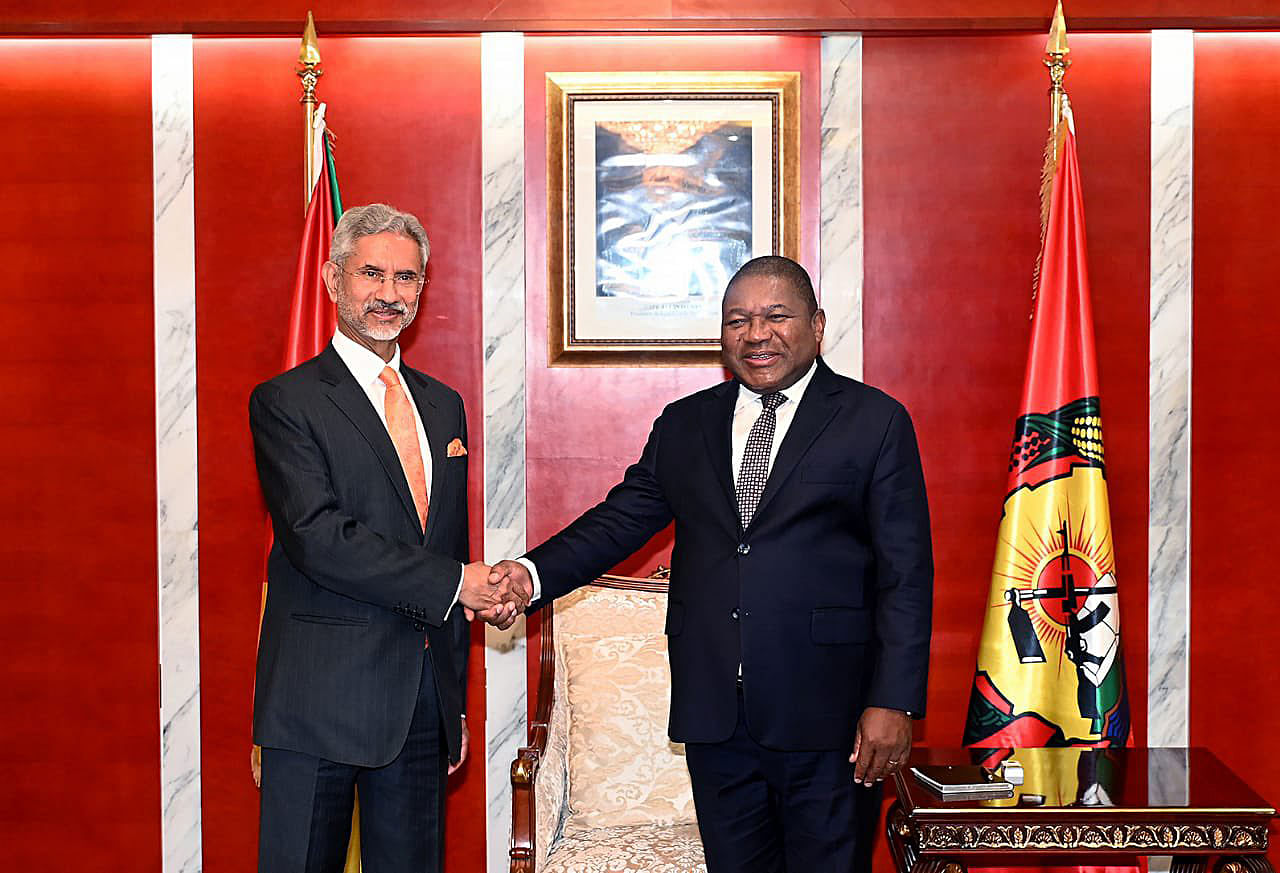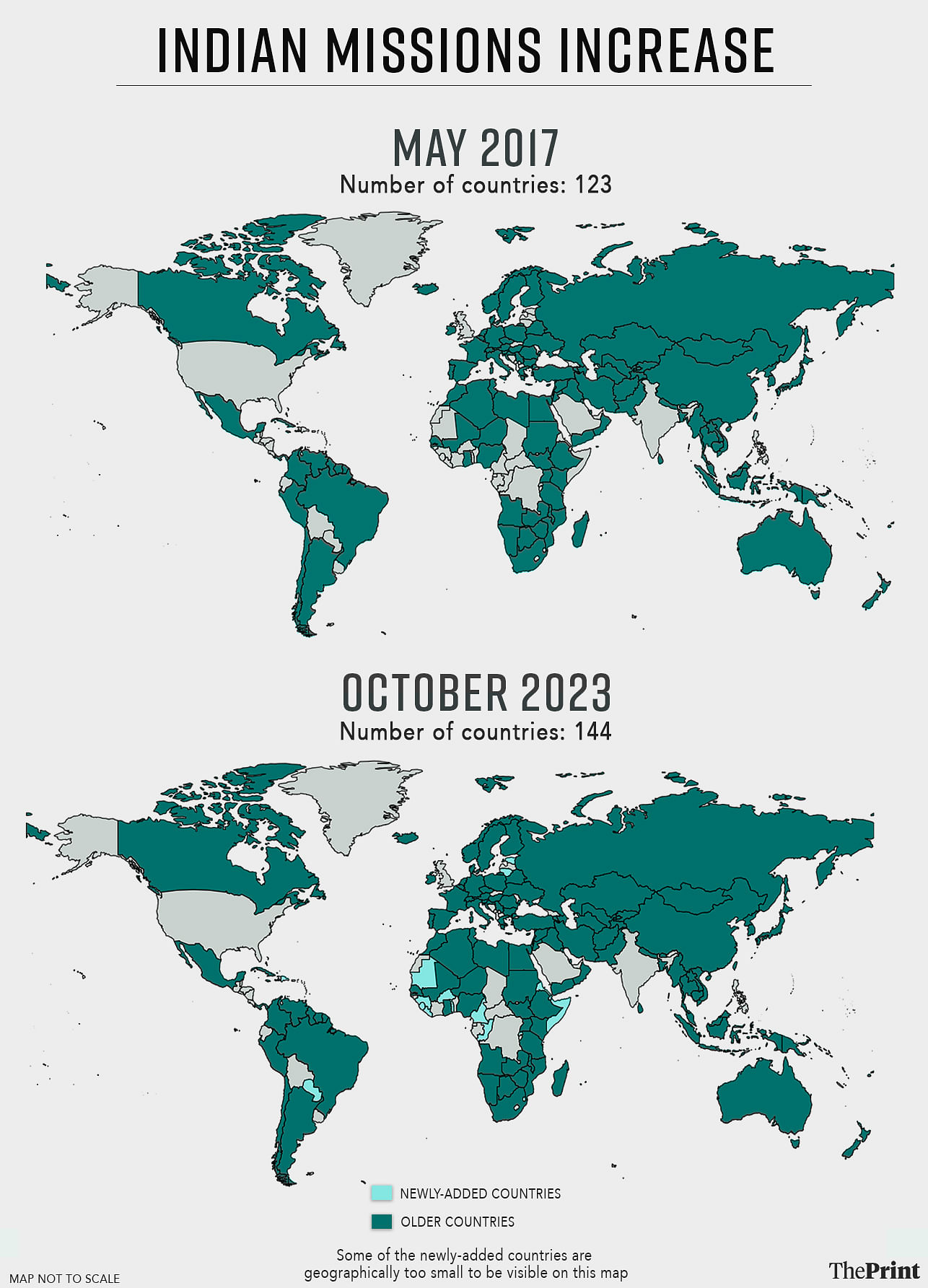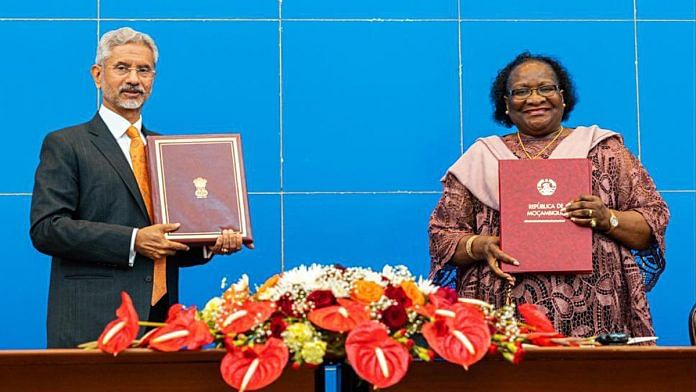New Delhi: From establishing new missions in 21 countries to frequent high-level visits to regions like Africa and Latin America, often left out in the past, besides new partnerships like Quad, India’s foreign policy has seen a push over the last six years.
This comes as Prime Minister Narendra Modi, with his band of four ministers headed by External Affairs Minister Dr S. Jaishankar, seeks to become the ‘Voice of Global South’ and increase India’s influence on the world stage.
The Modi government has espoused a ‘Neighbourhood First’ policy while also attempting to enlarge its strategic orbit to include new partnerships like the Quad — with the US, Australia and Japan.
In 2014, the Ministry of External Affairs (MEA) had constituted a list of countries that no Indian minister had visited in years, people familiar with the matter told ThePrint.
“It was a list of roughly 50 countries, mainly in Africa. That’s why you’ve seen many high-level visits (the PM, EAM or MoS) to untapped regions like Africa and Latin America in recent years,” one such source said.
MEA data from May 2017 to October 2023 shows that India went from having missions in 123 countries to 144 countries. (This does not include honorary consuls nor missions in headquarters of international organisations like the United Nations.)
Of the 21 new countries added to the list, 16 are in Africa.
That said, India only has resident missions in around 50 of the 193 United Nations (UN) member countries. More posts can help New Delhi “boost” its aspiration to be a permanent member of the UN Security Council, a parliamentary committee recommended last year.
Currently, the country with the largest diplomatic presence in the world is China. According to the Lowy Institute, Beijing overtook the US for the top position in 2019 and currently operates a total of 275 posts. India ranks number 12 on that list.
Apart from more missions, New Delhi has made an effort to increase minister-level visits to “untapped” regions like Africa and Latin America and Caribbean (LAC) regions where Indian engagement has been relatively limited and primarily driven by Indian IT and pharma businesses in the past.
Dr S. Jaishankar’s visit to Mozambique in April was the first ever visit by an Indian External Affairs Minister to the East African country.
Paid homage to the leaders of Mozambique’s freedom struggle at the Heroes Square this morning.
Remembering them brings the Global South together. pic.twitter.com/NSX7OEdpej
— Dr. S. Jaishankar (@DrSJaishankar) April 14, 2023

And it is not just India which is opening up new missions abroad. More consulates have been opened within its own borders, mainly by developed countries that have seen fast-growing visa demand from Indians.
In June, the US announced that it would open consulates in Ahmedabad and Bengaluru. The reverse has also been true: India plans to open new consulates in France (Marseille) and Australia (Brisbane).
Also Read: Parliamentary panel urges MEA to ‘better utilise Indian missions’ to meet foreign policy objectives
More missions, reducing concurrent accreditation
According to data from the MEA website, India has opened missions in 21 more countries over the last six years. Some of these include reopening of missions.
A majority are African countries — Burkina Faso, Republic of Congo, Cameroon, Djibouti, Equatorial Guinea, Eritrea, Eswatini, Guinea, Liberia, Mauritania, Cabo Verde, Rwanda, São Tomé and Príncipe, Sierra Leone, Somalia and Togo.

The others include Dominican Republic (2022), Estonia (2021), Lithuania (2022), Paraguay (2022) and Malta (reopened in 2017).
Missions in Lithuania and Cabo Verde are in the process of being set up, though ambassadors have been appointed.
India is also set to open a mission in Timor-Leste, an island country strategically positioned between the Indian and Pacific Oceans that China has also been courting in recent years.
Act East in action – Delhi to Dili: PM Modi announces opening of Indian embassy in Timor-Leste
Read @ANI Story | https://t.co/euqg21EwjR#PMModi #Delhi #India #ASEANSummit pic.twitter.com/AaaLP4wExY
— ANI Digital (@ani_digital) September 7, 2023
Proposing the opening of a new mission to the Union cabinet, however, requires “serious justification”, people familiar with the matter told ThePrint.
The volume of bilateral trade, strategic gains, strength of the Indian diaspora in that country and whether closer cooperation with that country could be of benefit in multilateral forums like the UN are some of the criteria, they added.
The MEA has also been trying to reduce concurrent accreditation. This is when a diplomat has a responsibility over two or more countries.
For example, before India opened an embassy in Cameroon in 2019, the Indian ambassador to Nigeria usually had to look after Chad and Benin too. A high commissioner would usually be assisted by honourary consuls — a part-time representative who is not a career diplomat stationed in those other countries.
But having one diplomat per country is still a distant dream. Indian diplomats in Panama, Switzerland, Colombia still have the added responsibility of another country in their respective regions. Concurrent accreditation also comes with its own set of challenges.
A R Ghanashyam, former high commissioner to Nigeria who served as concurrent envoy to Benin, Cameroon and Chad from 2013 to 2016, recalled having to travel to Chad through Gabon, when the Chad-Nigeria border was controlled by Boko Haram militants.
“I see the new mission in Cameroon as a positive development. Some times, African countries have opened missions in Delhi and waited years for reciprocity,” he told ThePrint.
India also opened a resident mission in Paraguay last year. Previously, the embassy in Argentina was concurrently accredited to Paraguay and had an honorary consul general in Asunción.
Honourary consuls are unsalaried, part-time representatives of a host country in which the appointing state wishes to be represented. They are not career diplomats and usually high-profile busines leaders that wield influence in the host country. Data from the MEA website from May 2017 to October 2023 shows that the number of honourary consuls has reduced by a third, to 24 from 38.
Minister-level visits to ‘untapped’ regions
This April, for the third time in less than two years, External Affairs Minister Dr S Jaishankar embarked on a tour to the LAC region, visiting Guyana, Panama, Colombia and the Dominican Republic.
“India will be more and more present in different corners of the world,” Jaishankar had said while speaking at a forum in Panama, a country that welcomed an Indian foreign minister after 60 years.
In December 2022, Jaishankar also visited Cyprus — the first by an Indian foreign minister since Pranab Mukherjee visited the country in 2007. There, Jaishankar met his Cypriot counterpart Ioannis Kasoulides where they discussed the Ukraine conflict and signed three agreements, including on defence and military cooperation.
The pleasure was all mine! 🇨🇾🇮🇳 https://t.co/KxJR7kIcWe
— Ioannis Kasoulides (@IKasoulides) September 23, 2022
The induction of two new Ministers of State for External Affairs in July 2021 — expanding MEA into a four-minister team — has also allowed for more engagement with countries that have not been visited in years.
The four-minister team previously consisted of EAM Jaishankar and MoS V Muraleedharan but now includes ministers Meenakashi Lekhi and Dr. Rajkumar Ranjan Singh too.
Muraleedharan travels the most out of the three deputies, mainly to the Middle East, Gulf and Southeast Asia. Lekhi, meanwhile, has visited some distant nations like North Macedonia, Honduras, Malta and Cuba. Dr Singh has conducted fewer solo trips.
In 2019, Muraleedharan had made his first visit to none other than Nigeria, a move reflecting the Modi government’s push to boost ties with African countries and counter Chinese influence in the region.
(Edited by Gitanjali Das)
Also Read: ‘Lack of support from host govt’ — Afghan embassy’s 3 main reasons for shutting down operations



